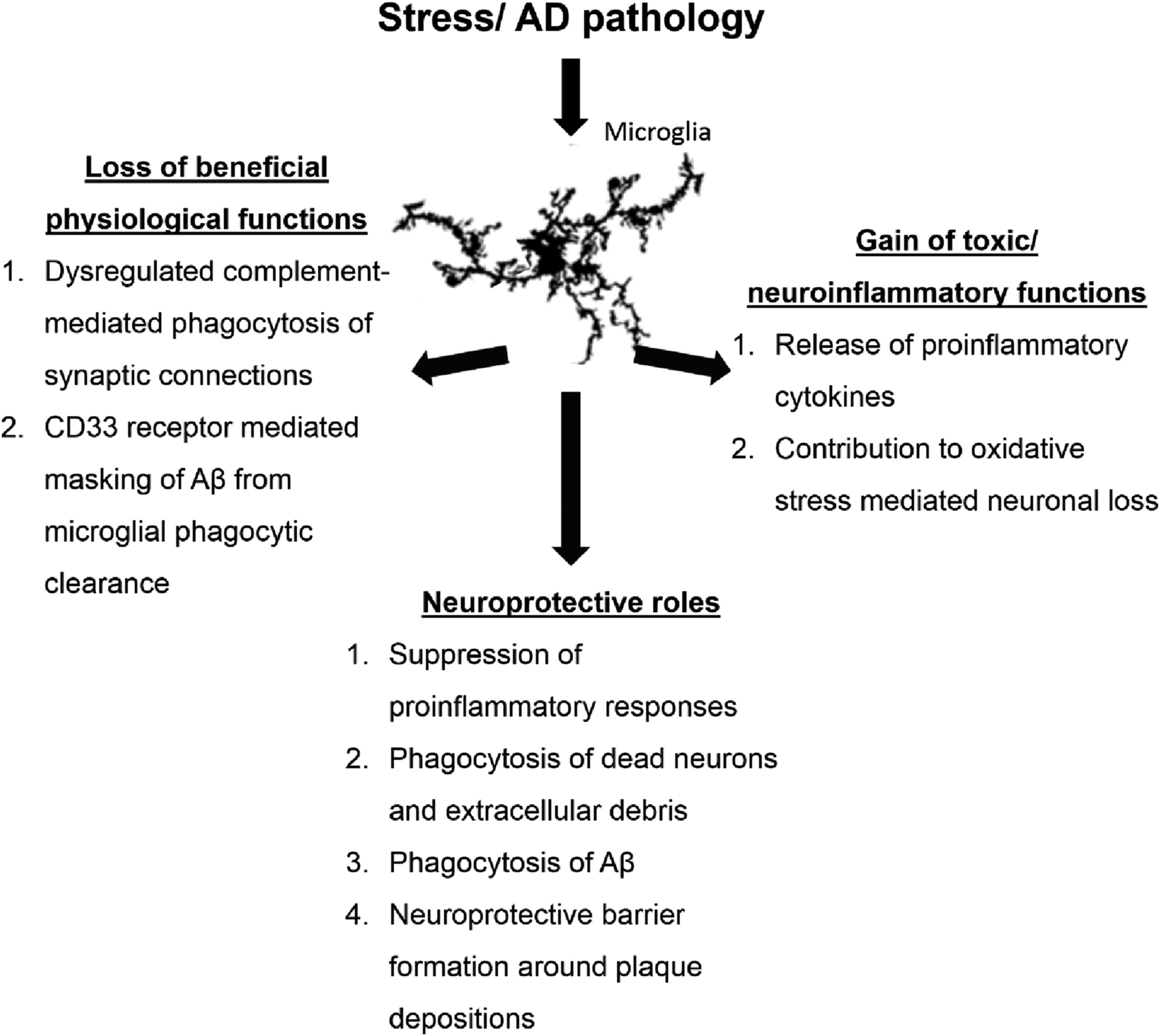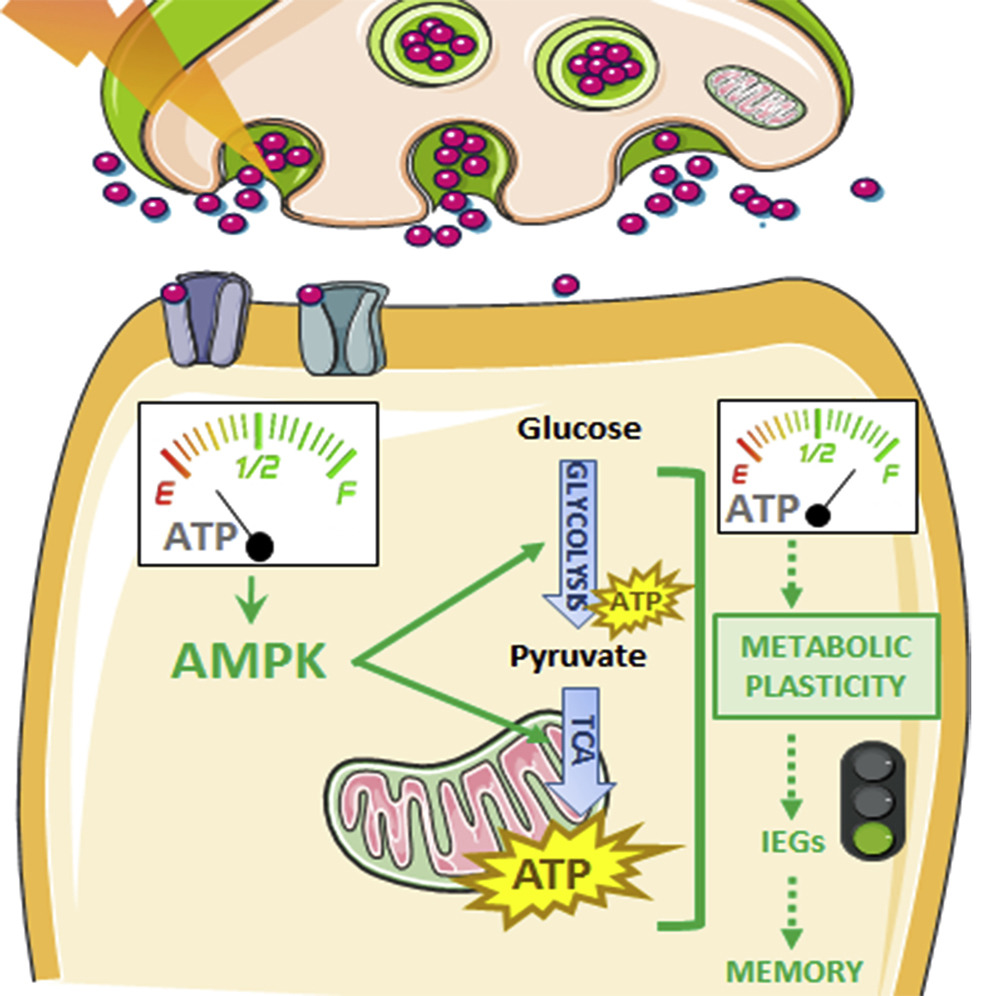Elsevier, Neurobiology of Stress, Volume 9, November 2018
Microglia are the predominant immune cells of the central nervous system (CNS) that exert key physiological roles required for maintaining CNS homeostasis, notably in response to chronic stress, as well as mediating synaptic plasticity, learning and memory. The repeated exposure to stress confers a higher risk of developing neurodegenerative diseases including sporadic Alzheimer's disease (AD).
Elsevier, Neurobiology of Stress, Volume 9, November 2018
Exercise has been shown to reduce the risk of developing Mild Cognitive Impairment and Alzheimer's disease as well as to improve cognition in healthy and cognitively impaired individuals. However, the mechanisms of these benefits are not well understood. The stress hypothesis suggests that the cognitive benefits attributed to exercise may partially be mediated by changes in the cortisol secretion pattern.
Elsevier, iScience, Volume 9, 30 November 2018
Although the brain accounts for only 2% of the total body mass, it consumes the most energy. Neuronal metabolism is tightly controlled, but it remains poorly understood how neurons meet their energy demands to sustain synaptic transmission. Here we provide evidence that AMP-activated protein kinase (AMPK)is pivotal to sustain neuronal energy levels upon synaptic activation by adapting the rate of glycolysis and mitochondrial respiration. Furthermore, this metabolic plasticity is required for the expression of immediate-early genes, synaptic plasticity, and memory formation.
Elsevier, Current Opinion in Green and Sustainable Chemistry, Volume 13, October 2018
Sustainable innovation is a key-objective for our Group that has recently integrated the principles of sustainable development into all stages of a product's life cycle, from its design to consumer use. The following ambitious commitment: 100% of its products should bring an environmental (or social benefit) by 2020, will be reached, in particular, by integrating and giving a constant privilege to renewable raw materials -or ingredients-that originate from sustainable resources that fully comply with the green chemistry rules.
Elsevier, Current Opinion in Green and Sustainable Chemistry, Volume 13, October 2018
The United Nations’ Sustainable Development Goals (SDG's) have exceptional value in identifying key areas of challenge that need urgent improvement if we are to move away from the unsustainable trajectory that we are on. The place that is a major shortcoming of these goals is that they take a highly integrated and inextricably linked system, and express them as individual areas such as food, water, poverty, materials, empowerment, etc. In the absence of systems thinking, there is an excellent chance of noble intentions bringing about unintended and perhaps counter-productive consequences.
Elsevier, Current Opinion in Green and Sustainable Chemistry, Volume 13, October 2018
Since their launch in 2015, the United Nations Sustainable Development Goals have been adopted by a wide range of businesses to capture their efforts in corporate sustainability. This review highlights specific examples from the chemical industry, together with an evaluation of the approaches and tools some companies are using to support the realisation of the goals. A view towards the efforts required by the chemical industry in order to maximise the impact of the goals is also provided.
Elsevier, Current Opinion in Green and Sustainable Chemistry, Volume 13, October 2018
Sustainable green chemistry depends on technically feasible, cost-effective and socially acceptable decisions by regulators, industry and the wider community. The discipline needs to embrace a new suite of tools and train proponents in their use. We propose a set of tools that will bridge the gap between technical feasibility and efficiency on one hand, and social preferences and values on the other. We argue that they are indispensable in the next generation of regulators and chemistry industry proponents.
Elsevier, Current Opinion in Green and Sustainable Chemistry, Volume 13, October 2018
Producing enough food of sufficient quality to feed an ever increasing population faces many challenges. This will require higher yields from agricultural production to meet the demands of changing population demographics using the limited natural resources available. Crop protection chemicals, developed by the agrochemical industry, are used by growers to ensure that consistently high yields are obtained, provide ease and reliability of harvest and to maintain excellent quality of produce from the crops they grow.
Elsevier, Current Opinion in Green and Sustainable Chemistry, Volume 13, October 2018
Until now, much Green and Sustainable Chemistry has been focused on how chemicals are made. Here we suggest that, if chemistry is to contribute effectively to achieving the SDGs, we need to change the way that things are done at both ends of the chemical supply chain. For chemical research at the start of the chain, we need to rethink how we build the laboratories in which we carry out the research so as to minimize the use of energy.


